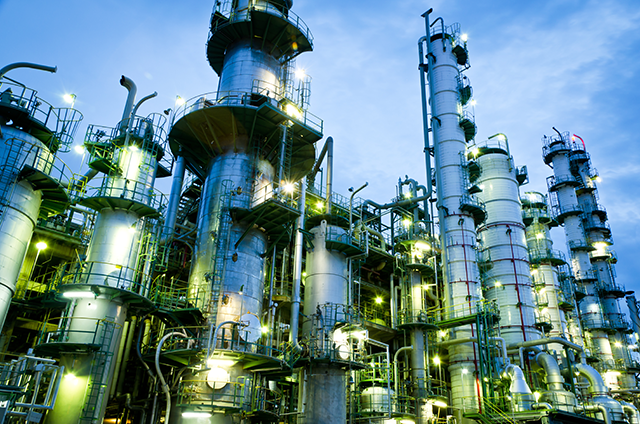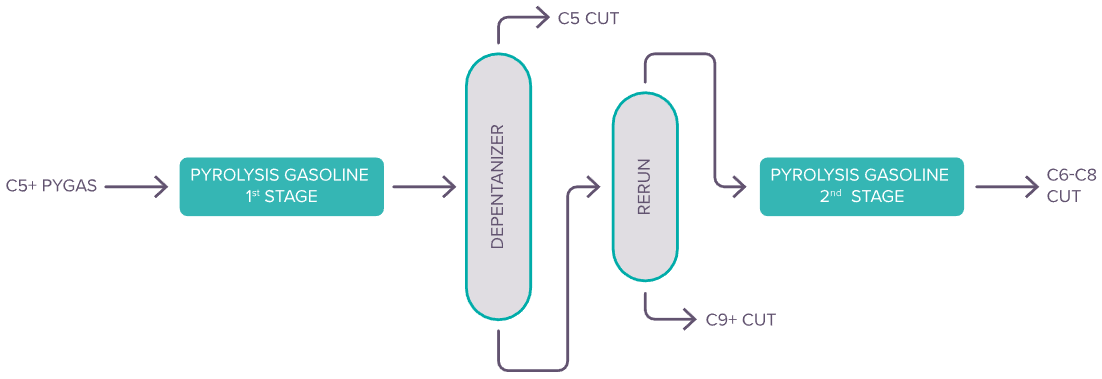Process Overview
In order to recover BTX from Pygas, the unsaturated compounds and sulfur compounds have to be removed efficiently.
This is the target of Axens’ two different stages of Pygas hydrogenation : GHU-1 and GHU-2.
Figure 1 - C5+ Pygas hydrogenation process overview

1st Stage Gasoline Hydrogenation Unit, GHU-1
The 1st stage of the Gasoline Hydrogenation Unit (GHU-1) involves the selective Hydrogenation of diolefins and styrenics. Efficiency of the conversion in this stage is essential for the downstream unit’s operation.
Figure 2 - 1st Stage Gasoline Hydrogenation Unit, GHU-1

The first stage process aims to improve the stability of the raw pyrolysis gasoline by selectively hydrogenating the diolefins and alkenyl compounds, making it suitable for further processing in a second stage. The reaction is carried out mainly in the liquid phase, on a specific catalyst in a fixed bed reactor.
The operating conditions are selected to maximize the conversion of diolefins and alkenyl-aromatics, while minimizing the formation of heavy products by polymerization, preventing any aromatics loss.
In this stage, palladium or nickel-based catalysts are used depending on the site-specific constraints among which the feedstock characteristics, the product specifications, the unit characteristics and the operating conditions.
2nd Stage Gasoline Hydrogenation Unit, GHU-2
In the 2nd stage of Pygas Hydrogenation (GHU-2) the C6-C8 heart cut is further processed to prepare a feedstock suitable for Aromatics recovery, by selectively hydrogenating the olefins and hydrodesulfurization.
Figure 3 - 2nd Stage Gasoline Hydrogenation Unit, GHU-2

This process consists in olefins and sulfur removal from all or a specific fraction of the first stage effluent. The complete removal of olefins and sulfur has to be ensured while minimizing aromatics hydrogenation. The effluent is then routed to an aromatics recovery unit.
Reference
Axens, Olefins Selective Hydrogenation




















